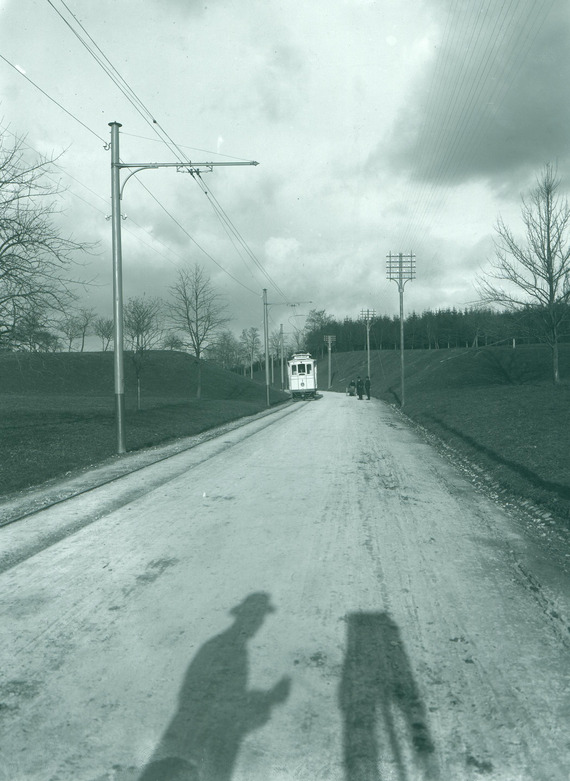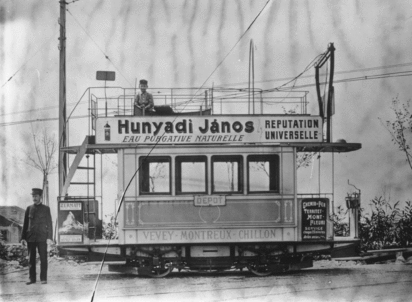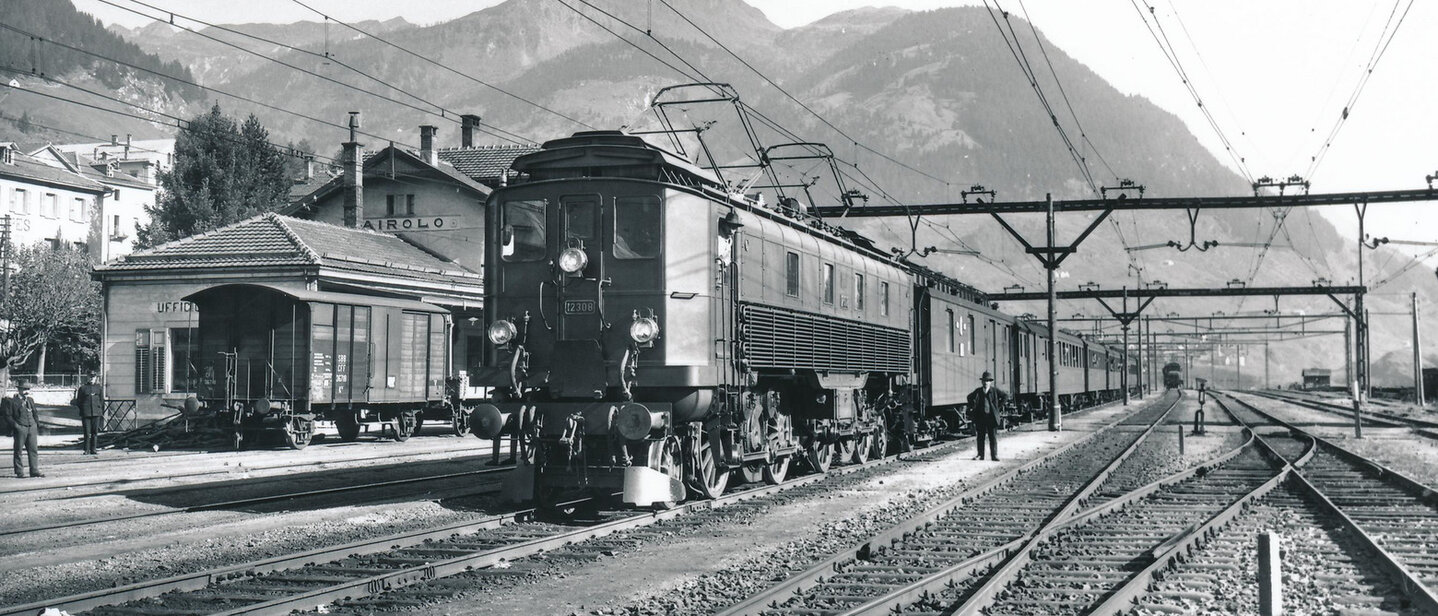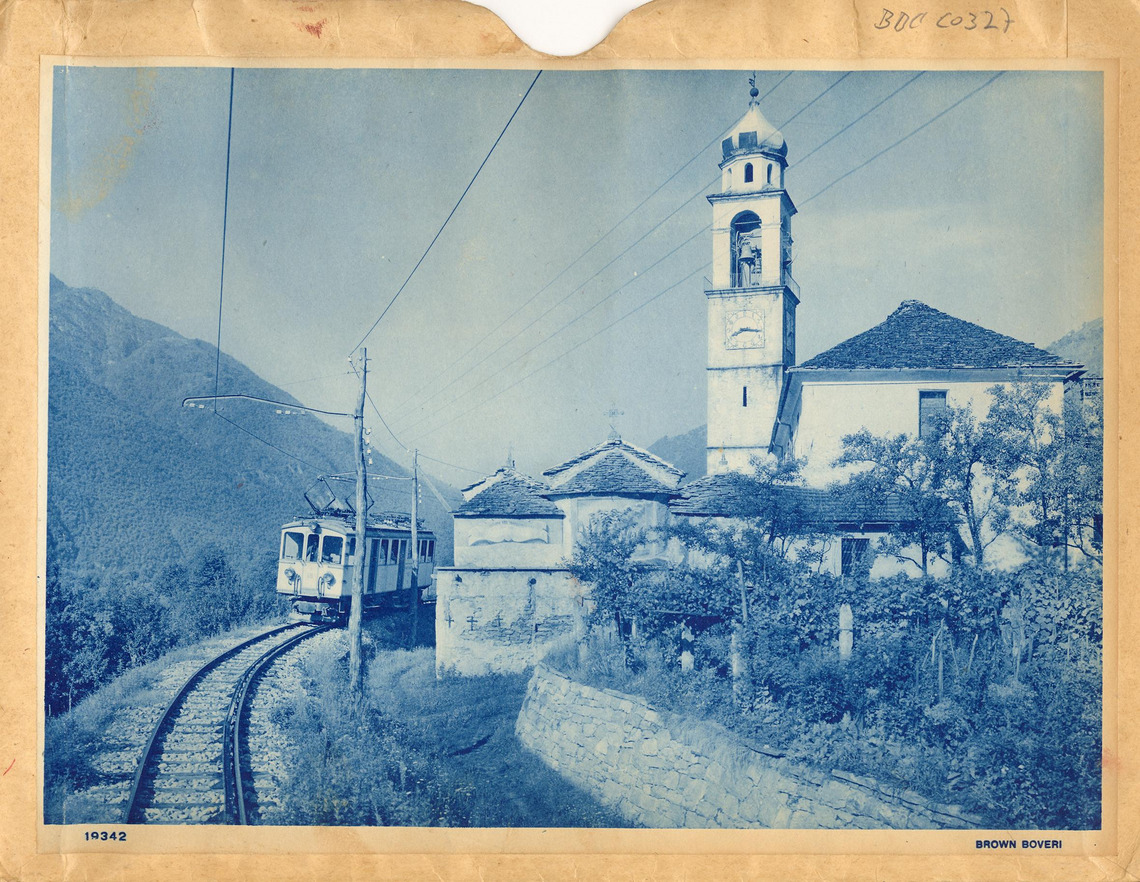
The early electrification of the railroads at the beginning of the 20th century was important for the development of the Swiss economy. Thanks to an extensive collection of glass plate negatives in the documentation center, historian Kilian Elsasser has created an exciting document of the times.
In 1888, the first electric rail vehicle in Switzerland went into regular operation. It transported tourists from Vevey via Montreux to Chillon Castle. On the open roof platform, the view over Lac Léman could be enjoyed without the stench and smoke. Since 1913, BLS had been using the single-phase alternating current of 15,000 volts and 16 2/3 hertz favored by the Swiss study commission. In the same year, SBB approved the loan for the electrification of the Erstfeld - Bellinzona line. The 100th anniversary of the opening of the first electrified Gotthard lines with the new freight locomotives will soon be celebrated: Göschenen - Airolo on September 13 and Erstfeld - Biasca on December 12, 1920. The two electrical engineering companies MFO and BBC were instrumental in the electrification of the railroad in Switzerland.
Photographic equipment weighs 35 kilograms
The Swiss Museum of Transport holds an important stock of image documentation on electric rail vehicles in the form of glass plate negatives. These include the important collections of the former Brown Boveri & Cie. factory in Baden (BBC) with 1750 items and the Zurich-based Maschinenfabrik Oerlikon (MFO) with 1930 items. All these testimonies to the Swiss electrical industry are in 18x24 cm format.
The photographs are testimonies of factory photographers who were once employed by every large Swiss company. The photographers had to put up with physically strenuous journeys, both in Switzerland and abroad, to take the pictures. Until the end of the 1950s, the entire photographic and lighting equipment weighed between 30 and 35 kilograms, including the 18x24-centimetre wooden camera with tripod and containers. Added to this were the glass image carriers, which made the equipment even heavier.
Scientific approach
The photos are sober and objective and show a scientific seriousness and solidity. They are uniformly sharp, have balanced tonal values and maintain the proportions. The photographers claimed a scientific and methodical approach in order to show the technological development of a locomotive or the new electric vehicles in general. Around 1904, for example, the MFO photographers took over a hundred pictures of the newly developed single-phase alternating current locomotives on the Seebach-Wettingen test line and meticulously documented the various positions of the pantographs.
Visual corporate culture
The company photographers were part of an entire marketing process within the company. They provided their photographs with a brief description of the content. The glass negatives were packed in envelopes with the number, date and subject of the picture noted on them. Blueprints were glued to the envelopes for quick retrieval. The negatives were used to produce photographic prints, often with the backgrounds of vehicles or individual parts retouched or cropped. Both MFO and BBC used their company photos to document their products - from individual vehicles to precise details - and kept in touch with their customers with their illustrated bulletins. The images gave the companies a face to the outside world and became part of the corporate culture.



